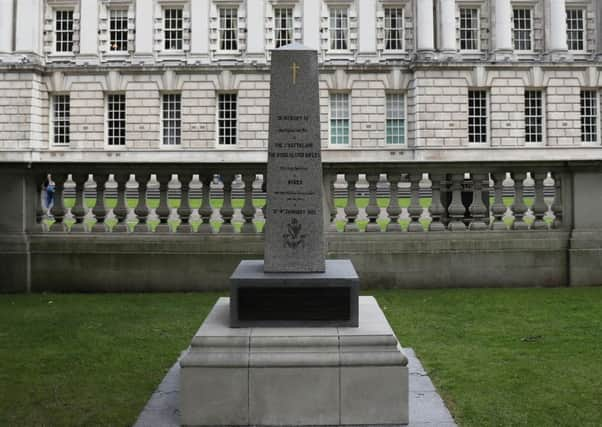Facelift for Belfast City Hall Korea War memorial


It remembers the 157 men of the Royal Ulster Rifles (RUR) who died in the 1951 Battle of Happy Valley and elsewhere during a campaign against communist China.
Gold lettering was redone as part of conservation work on the monument in the grounds of Belfast’s City Hall.
Advertisement
Hide AdAdvertisement
Hide AdCatherine Champion, a trustee at the regiment’s museum in Belfast, said: “We have been delighted that we have had such wonderful work done to it, the gold lettering has been redone and it is now possible to read things on it.”
Ruth Bothwell, who carried out the conservation work, said it had been pretty dirty and the lettering had lost a lot of its colouring due to weather conditions.
She said the gilded crosses which adorned the memorial had almost disappeared.
Between 1950 and 1953, hundreds of soldiers from across Ireland served in Korea in a war designed to roll back the spread of communism.
Advertisement
Hide AdAdvertisement
Hide AdMore than 1,000 British casualties were reported killed in action and another 1,000 missing or taken prisoner.
Today the peninsula is still divided between communist North and pro-western South.
Gavin Glass, curator of the Royal Ulster Rifles Museum in Belfast, said he was delighted the conservation work had been a success.
He added: “It is very important to the museum and very important to the regiment that it is kept in good order in the city of Belfast.”
Advertisement
Hide AdAdvertisement
Hide AdAlbert Morrow, a highly decorated veteran who served as a lance corporal during the war, said the memorial meant a lot to him.
It was brought to Northern Ireland from Korea, installed at St Patrick’s Barracks in Ballymena and when that base closed it was moved to the city hall in 2010.
Mr Morrow said: “The story goes that the farmers pushed it onto the ground and it lay there for quite a while and it was recovered and brought back to Belfast on HMS Belfast, which was coming back from Korea to be decommissioned.”